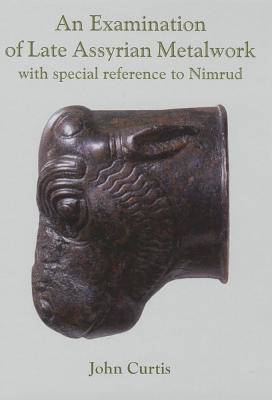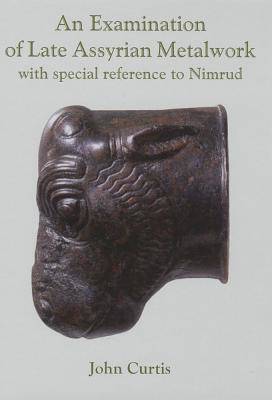
- Afhalen na 1 uur in een winkel met voorraad
- Gratis thuislevering in België vanaf € 30
- Ruim aanbod met 7 miljoen producten
- Afhalen na 1 uur in een winkel met voorraad
- Gratis thuislevering in België vanaf € 30
- Ruim aanbod met 7 miljoen producten
Zoeken
An Examination of Late Assyrian Metalwork
With Special Reference to Nimrud
John Curtis
Hardcover | Engels
€ 92,45
+ 184 punten
Omschrijving
Although the Assyrian kingdom that dominated the Ancient Near East between the ninth and seventh centuries BC had a rich material culture, attested particularly by the distinctive stone wall reliefs and colossal gateway figures, practically nothing is known about Assyrian metalwork. There has been no previous survey of this subject, largely because most of the material was not accessible. This volume makes available for the first time a vast amount of previously unpublished metalwork, much of it from the Assyrian capital city of Nimrud, excavated first by Sir Henry Layard between 1845 and 1851 and then by the British School of Archaeology in Iraq between 1949 and 1963. It emerges that Assyria had a thriving metalworking industry probably superior to any contemporary state in the region, and was producing large quantities of sophisticated bronze and ironwork, of high technical quality and sometimes elaborately decorated. This book will therefore be of interest to archaeologists, art historians and metallurgists. It is the publication of a PhD thesis that was successfully submitted in 1979. It is published here in its original form in order to make the large amount of primary data that it contains available to a wider circle of scholars.
Specificaties
Betrokkenen
- Auteur(s):
- Uitgeverij:
Inhoud
- Aantal bladzijden:
- 242
- Taal:
- Engels
Eigenschappen
- Productcode (EAN):
- 9781842175071
- Verschijningsdatum:
- 31/12/2012
- Uitvoering:
- Hardcover
- Formaat:
- Genaaid
- Afmetingen:
- 216 mm x 297 mm
- Gewicht:
- 1542 g

Alleen bij Standaard Boekhandel
+ 184 punten op je klantenkaart van Standaard Boekhandel
Beoordelingen
We publiceren alleen reviews die voldoen aan de voorwaarden voor reviews. Bekijk onze voorwaarden voor reviews.











